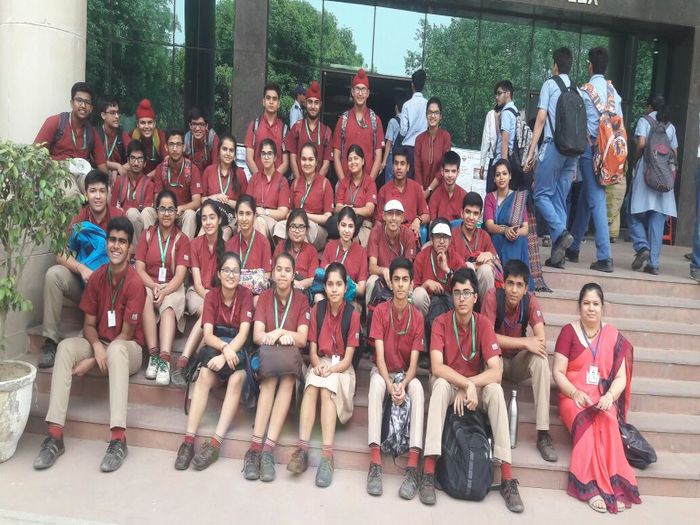Visit to IIT Delhi Open House 2018
IIT Delhi Open House exemplifies Dr. A.P.J. Abdul Kalams famous call to 'Ignite the minds' of the Indian youth.
On 21st April 2018 , IIT Delhi exhibited an extensive collection of innovative research and product development projects, for the 14th consecutive year . Our School was represented at this annual event by a team of 34 students of class XI and 4 teachers - Ms. Suman Aswal, Ms. Nausheen Wasi, Mr. Hemant Singh and Mr. Gaurav Garg. The event registered the participation of over 80 schools and 25 universities of the Delhi/NCR region.
The Director of IIT Delhi, Mr. V. Ramgopal Rao, declared that the goal of the Open House is build future assets for the country. Prof. Mausam, Associate Professor, Department of Computer Science and Engineering, IIT Delhi gave an introduction about Artificial Intelligence. He discussed the history of the evolution of AI from 1956 and research in the field that continues till date. From AI proving theorems in 1996, to beating the best human chess player in 1997 and to self-driven cars in 2005, AI has evolved drastically. The main goal now is to enable better interaction between humans and AI machines.
[gallery link="file" order="DESC"]
The event comprised of segments- physics, chemistry, robotics and aeronautics. The robotics section exhibited a smart scooter, hydraulic ball thrower, etc.
The ball thrower is a set of 2 amazing machines- one holds the ball and places it in the other and the other throws it through a ring placed few meters away. What is amazing about them is that the only moving parts are the wheels, which are remote controlled; the rest is managed by hydraulics.
2 other demonstrations in the physics and chemistry areas were the spinotronix and glass blowing activities. In spinotronix, the making of data/memory chips was demonstrated. They make use of plasma, charged noble gas or argon ions which are rapidly moved towards a film. The change of momentum delivers the conductor to the target. This continues until the entire circuit is printed. This method can also be used to create metal-metal salts like NiFe. For this, an appropriate percent composition of the alloy has to be taken.
Glass blowing is done by heating the glass to a temperature of 1200 c. Then air is blown through the molten glass in an appropriate direction to get the desired shape and thickness.
In the age of 'Google', one doesn't want to explore beyond! But at IIT Delhi, individuals strive to think out of the box, to raise questions and to innovate.
The event was designed to spread awareness and inspire future scientists of the country.
Our students were suitably driven and motivated to explore the inner recesses of their minds and to aspire for the frontiers in innovation and technology.
Gracie Chaudhary, XI-B and Darsh Kumar, XI-A.













